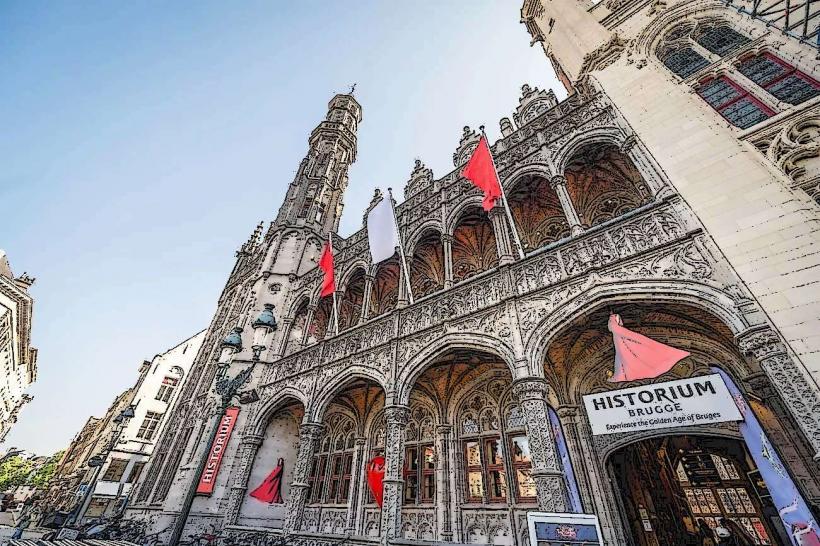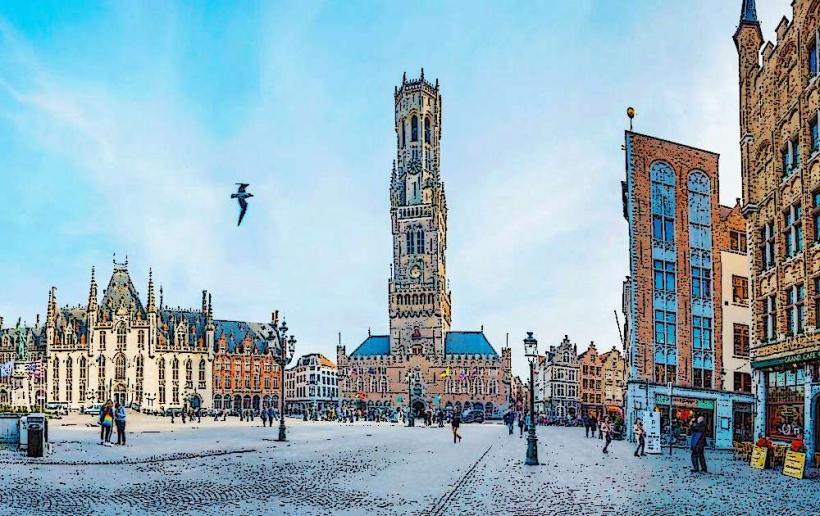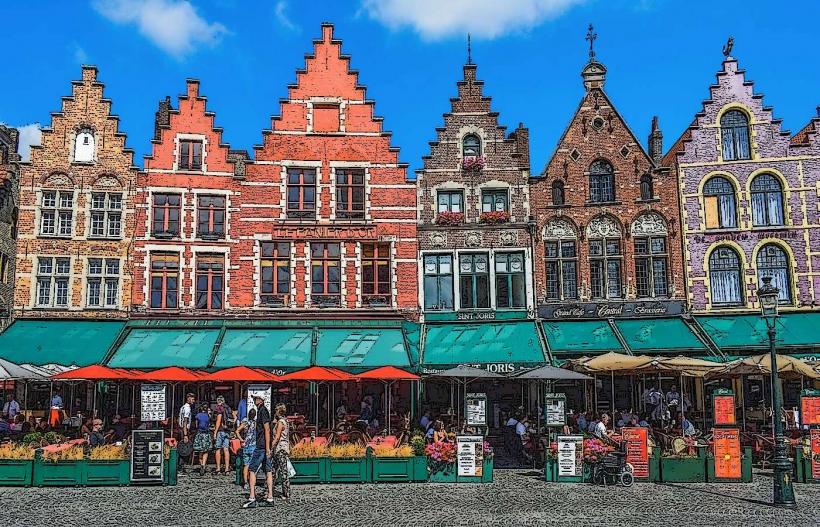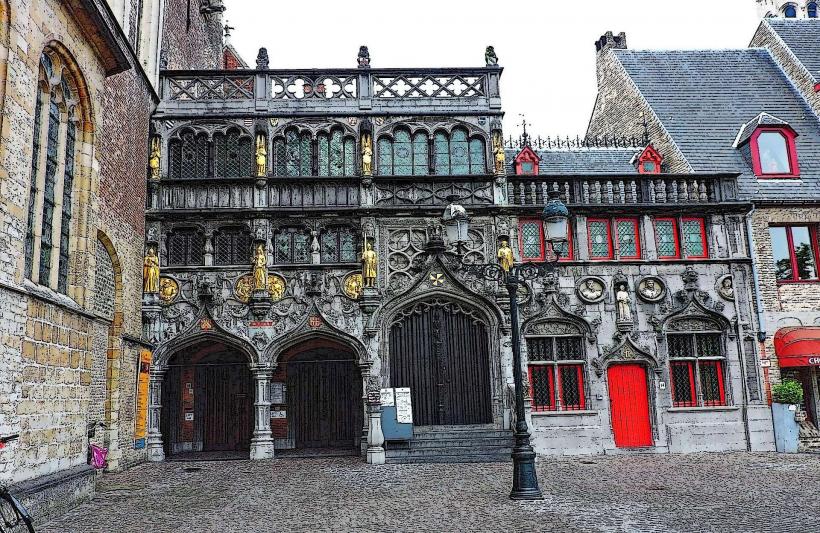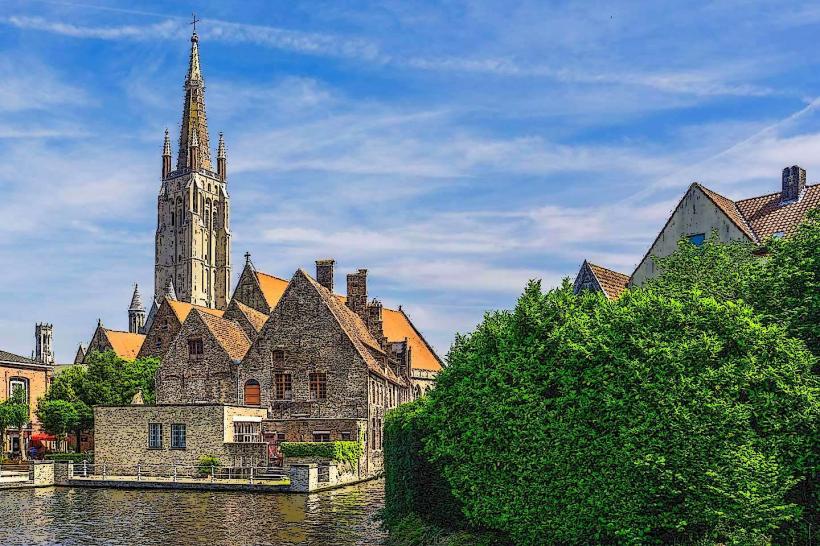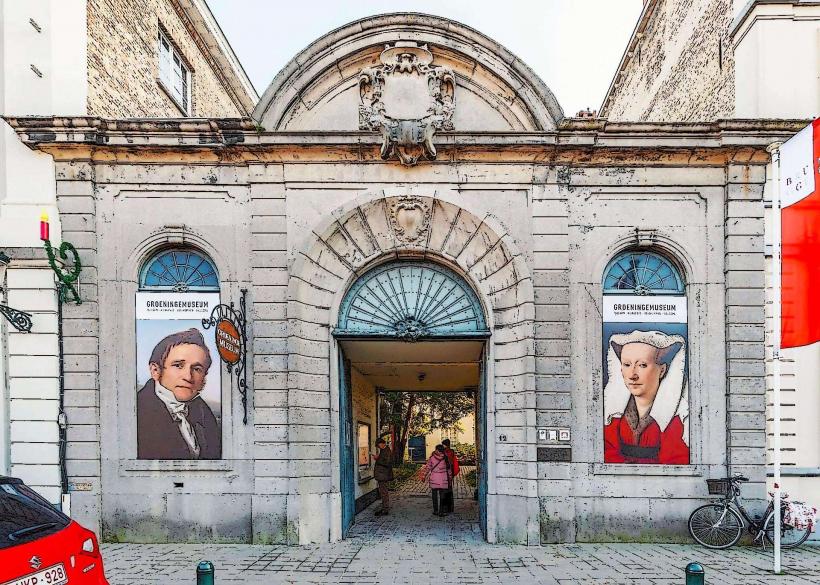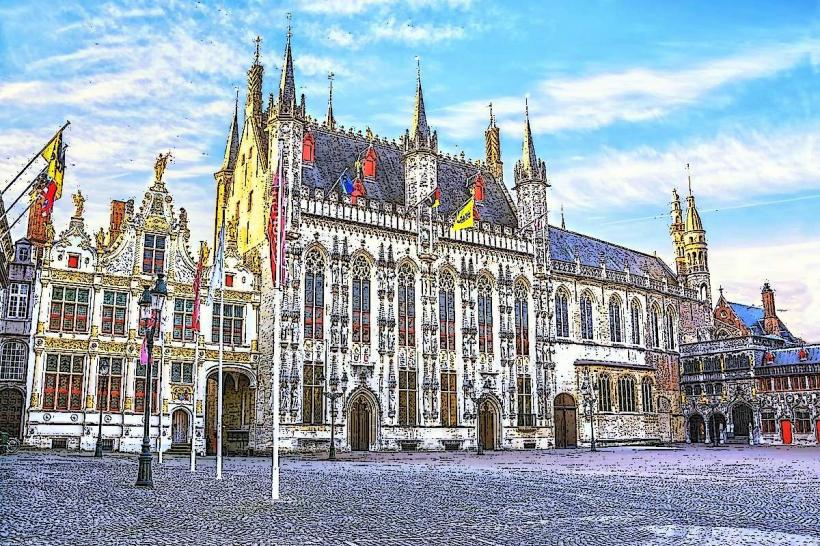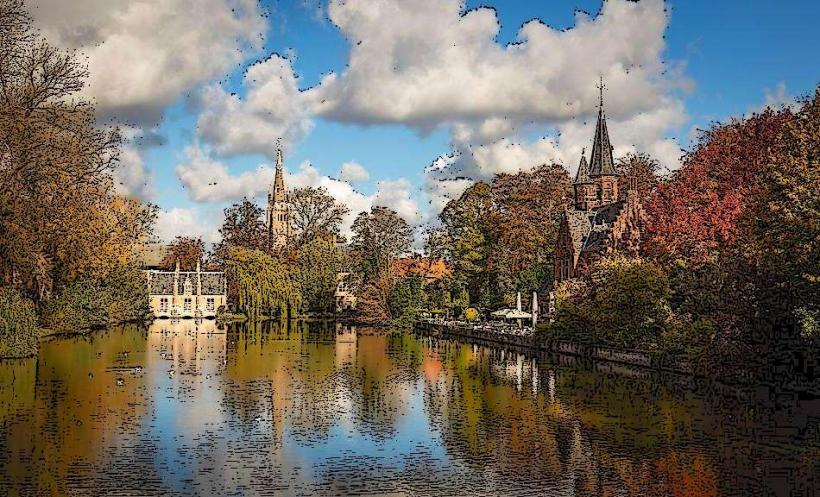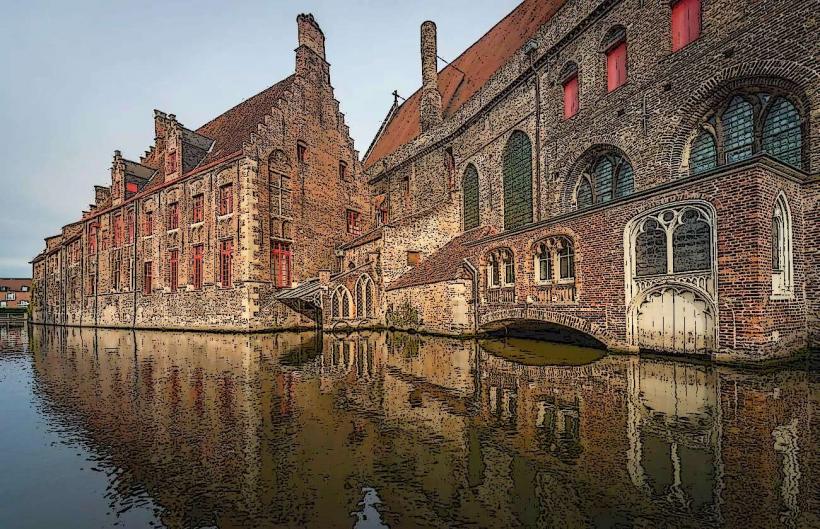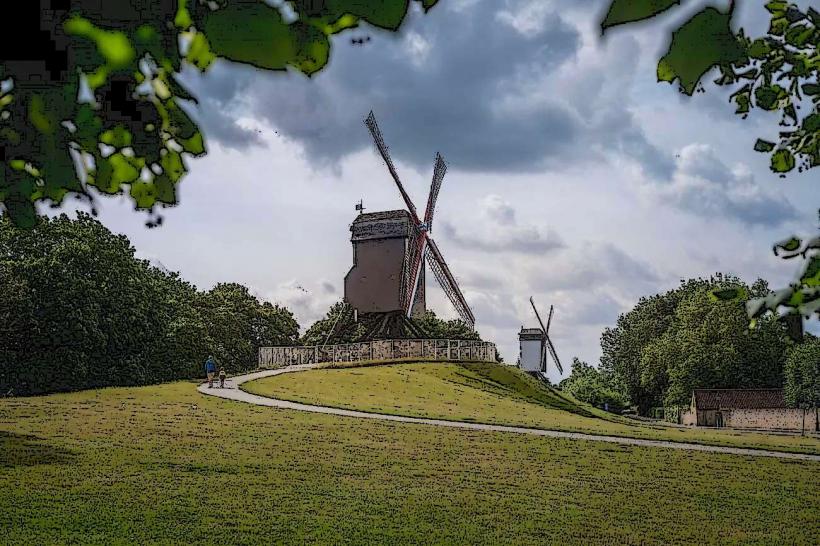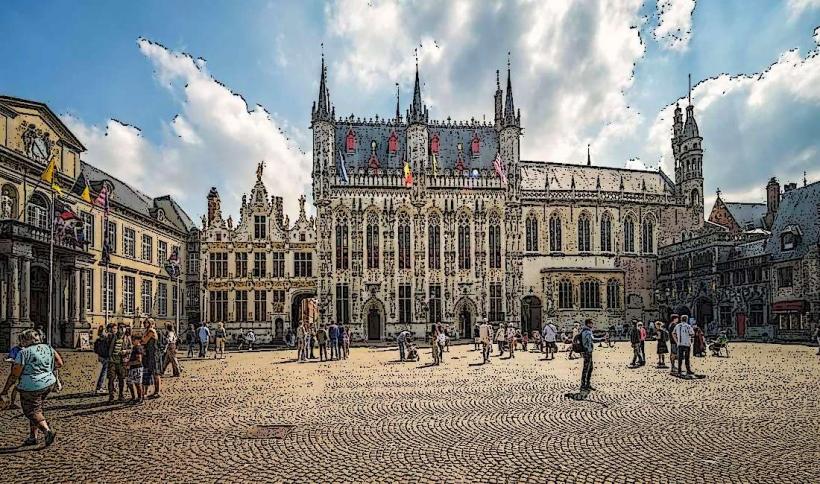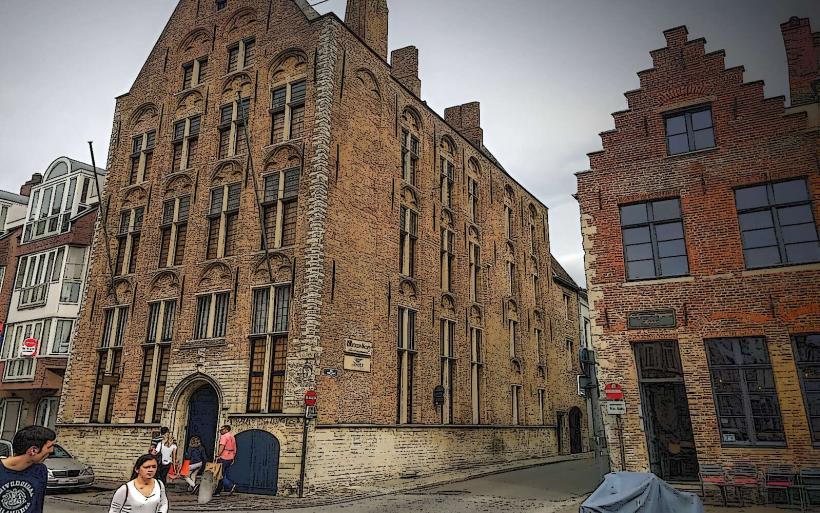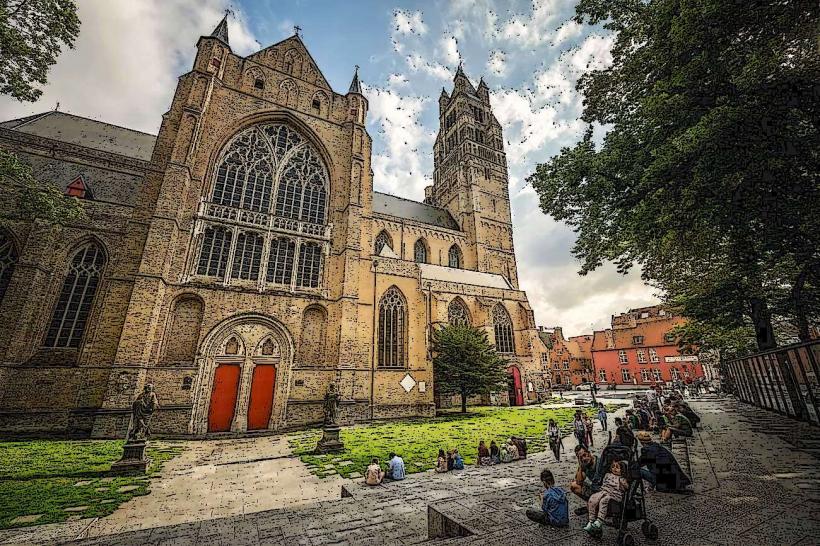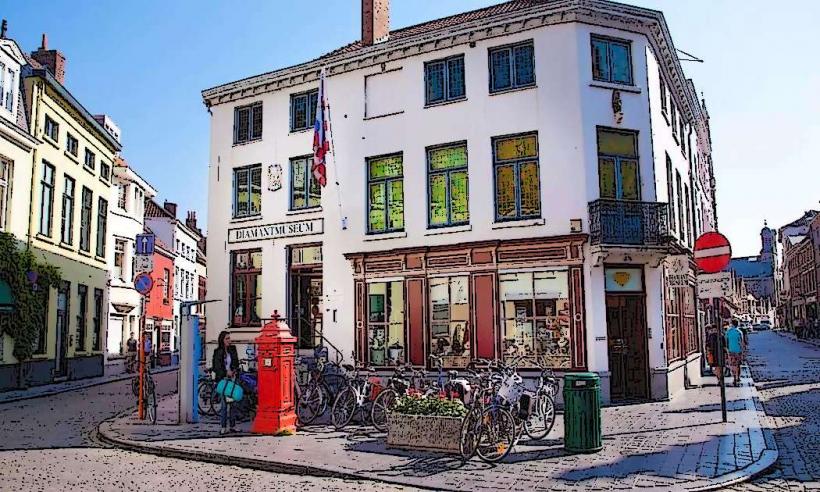Information
Landmark: Begijnhof (Beguinage)City: Bruges
Country: Belgium
Continent: Europe
The Begijnhof (or Beguinage) in Bruges is a historic complex that is both a peaceful retreat and a significant part of the city's rich history. Begijnhofs, or Beguines, were communities of religious women who lived in semi-monastic settings, devoting themselves to prayer, charity, and service, but without taking formal vows of poverty, chastity, or obedience. The Begijnhof in Bruges is one of the most notable examples of such a community in Belgium and has been beautifully preserved, offering a glimpse into the past.
History and Significance
Origins of the Beguines: The Beguines were women who chose to live a religious life without entering a convent. The movement began in the 13th century in the Low Countries and was widespread in cities like Bruges, Ghent, Antwerp, and Brussels. These women lived in communities, often called beguinages, where they could engage in religious activities while also being involved in secular life, especially caring for the poor and sick.
Founding of the Bruges Begijnhof: The Begijnhof in Bruges was established around 1245, and it remained an active religious site for centuries. The community consisted of women, known as Beguines, who dedicated themselves to religious life while still maintaining personal independence. They lived in simple homes, followed a rule of life, and engaged in charitable work. The Begijnhof also became an important center of spirituality and piety in medieval Bruges.
Religious and Social Role: The Beguines played a significant role in the social fabric of Bruges during the Middle Ages. They were often widows, unmarried women, or those seeking refuge from harsh conditions, and the Begijnhof provided them with a safe haven where they could live in religious devotion, serve their community, and lead a relatively independent life.
Religious Orders: While not bound by traditional vows like nuns in convents, Beguines lived under a religious rule, typically supervised by a priest. They were seen as a third order in the Catholic Church, distinct from monks and nuns, but still contributing to religious life in their cities.
Decline of the Beguines: Over time, the Beguine movement began to fade, especially after the French Revolution and the Napoleonic Wars, which led to the closure of many Begijnhofs. The Bruges Begijnhof, however, was preserved and continues to be an important cultural and religious site.
UNESCO World Heritage: The Bruges Begijnhof is part of the UNESCO World Heritage Site designated for the historic center of Bruges. Its preservation is a testament to the city’s commitment to maintaining its historical and cultural landmarks.
Architecture and Layout
The Begijnhof in Bruges is a charming and serene complex, known for its quaint white houses, cobblestone paths, and peaceful garden. The architecture reflects its medieval origins, with a layout designed for quiet contemplation and communal living.
Houses:
- The Begijnhof consists of a series of white-painted houses, which were traditionally inhabited by the Beguines. These houses are small and simple, reflecting the modesty of the Beguine lifestyle. Each house had a small garden, and the layout is designed to foster a sense of community and tranquility.
Chapel of the Holy Savior:
- The most prominent feature of the Begijnhof is the Chapel of the Holy Savior (Dutch: Heilig-Bloedkapel), which dates back to the 14th century. This small but elegant chapel was the center of the Beguines' religious life, and it is still used for mass and other religious services today.
- The chapel is a beautiful example of Gothic architecture, with intricate stained-glass windows, a wooden altar, and medieval artwork. The chapel’s quiet and serene atmosphere makes it a perfect place for reflection and prayer.
Garden:
- The Begijnhof is surrounded by a large peaceful garden, which was traditionally used by the Beguines for prayer, meditation, and cultivation of herbs or vegetables. The garden still retains its tranquil charm, offering visitors a quiet retreat away from the bustle of Bruges.
- The garden is meticulously maintained, with flower beds, trees, and well-kept paths that allow for peaceful walks and reflection.
Courtyard and Entrance:
- The courtyard of the Begijnhof is a charming, open space surrounded by the white houses of the Beguines. The entrance is marked by an archway that separates the Begijnhof from the outside world, symbolizing the peaceful retreat within.
- A sign near the entrance explains the history of the Begijnhof and the role of the Beguines in Bruges’ history.
Cemetery:
- The Begijnhof also contains a small cemetery where the Beguines who lived there were buried. The graves are marked by simple tombstones, and the cemetery is a tranquil, reflective space for visitors and those with an interest in the history of the site.
Visitor Experience
Visiting the Begijnhof: The Begijnhof is open to visitors year-round, and it offers a peaceful, serene environment for those wishing to explore Bruges’ religious and social history. Visitors can walk through the courtyard, visit the Chapel of the Holy Savior, and take in the simple beauty of the white houses and gardens.
Opening Hours: The Basilica of the Holy Savior is typically open for visitors from 9:30 AM to 5:00 PM, but it is advisable to check for specific timings, especially for religious services or special events.
Admission: Admission to the Begijnhof is usually free, but visitors are encouraged to make a donation to help maintain the site. The chapel may have a small fee for entry, particularly if it is part of a guided tour or religious service.
Atmosphere: One of the key aspects of the Begijnhof is its quiet and peaceful atmosphere. It remains a place for spiritual reflection, and visitors often comment on the sense of calm and serenity that pervades the area. It is a great place for those looking to escape the busy streets of Bruges and experience a more contemplative side of the city.
Nearby Attractions
- The Begijnhof is located in the historic center of Bruges, making it easily accessible from other major landmarks, such as:
- The Markt Square: Bruges' central square, where you can find the Belfry Tower, Bruges Town Hall, and many cafes and restaurants.
- The Belfry of Bruges: A medieval bell tower offering stunning views of the city from its top.
- Minnewater Lake: A serene park area with beautiful views, often referred to as the "Lake of Love," and just a short walk from the Begijnhof.
Conclusion
The Begijnhof in Bruges is a remarkable historical and cultural site, offering a window into the medieval religious life of the Beguines. Its serene atmosphere, simple white houses, and tranquil gardens provide visitors with a peaceful retreat in the heart of Bruges. The Chapel of the Holy Savior and the site’s rich history as a place of pilgrimage, prayer, and charitable work make it a must-visit for anyone interested in the spiritual and social history of the city. Whether you are a history enthusiast, a lover of architecture, or simply in search of peace and quiet, the Begijnhof is an essential part of the Bruges experience.

